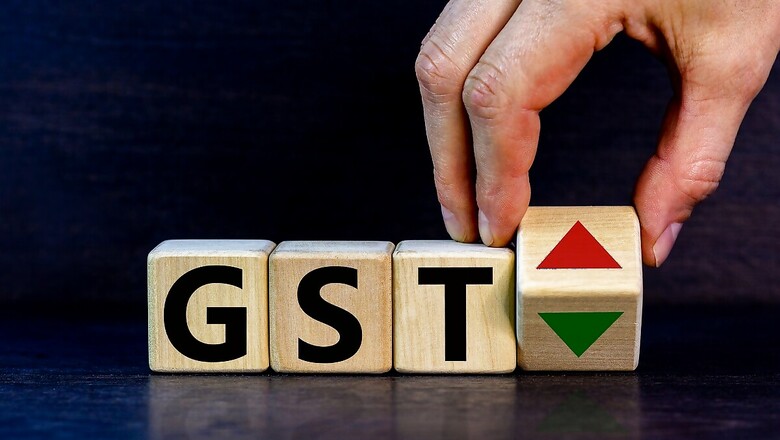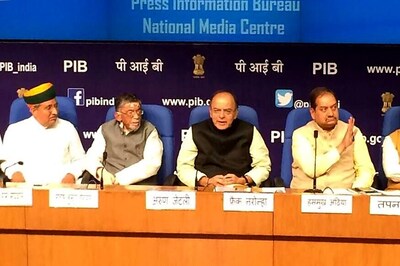
views
The launch of GST will go down in the economic, fiscal and constitutional history of India as a momentous milestone. Not only was it the culmination of decades of animated discussions and debate among political parties and fiscal experts, but also marked many a first – unique dual GST design, novel GST legislative body (the GST Council), and an unprecedented guarantee to states of five years of year-on-year GST revenue growth. The key objectives and benefits of GST cannot be over-emphasized – buoyancy in revenue, negate tax cascading, prevent revenue leakage through input tax credit manipulation and most importantly, exponentially enhance ease of business with a single destination-based consumption tax to replace and subsume multiple laws of the states and the Centre.
Not surprisingly, on the start date of GST, the preparedness of the government and of business, was far from desirable. The GSTN – the single electronic compliance platform of GST – was not even ready with a most basic initial requirement, namely, the electronic registration of taxpayers and the receipt on a monthly basis of over 6 million sales, purchases and final tax computation returns, filed by taxpayers in sync with the GST law. What followed was a series of compromises and delays which made a mockery of the very edifice of GST law – as the transactional level matching of input GST availed and claimed in the returns by a buyer of goods and services based on the returns filed by the seller of such supplies, could not effectively be collated, configured or verified by the GSTN portal. Also, multiplicity of rates and complexities in the law only confounded business and Revenue officers alike as both could not keep pace with the hundreds of changes announced in the law and the rules in the first year of GST (nearly a 1000 notifications and circulars till date). Both, Revenue and industry were partly guilty of adding to this confusion. Apart from the fact that they did not invest in getting conversant with the new law, they also chose to take legal stands which suited their interests, irrespective of the merits of the same. This short sightedness led to Advance Ruling Authorities and High Courts getting flooded with request for rulings or even worse, petitions challenging many critical provisions of GST law (about 3000 plus till date)
Adversity brings out the best in a man. The subsequent two years saw a turnaround in GST administration. Select tweaks such as doing away with the requirement of filing a purchase return altogether, resulted in better monitoring of returns, introduction of e-way bills, using risk management and data analytics to unearth GST frauds, restricting quantum of unmatched input tax credit, and most importantly, by stabilizing GSTN platform ensured reduction in technical glitches, a problem that had plagued GSTN in the first year of GST.
The subsequent years have progressively seen an increase in compliance with near doubling of the GST registrants from around 7 million to nearly 13 million. Revenue collections have also progressively stabilized and have now continually breached the initial benchmark of over one lakh crores of revenue collection every month. The most significant and remarkable change in GST law was of introduction of e-invoicing and QR code, in a phased manner (since 1 Oct 2020) and this has been a major watershed in the GST journey. Simply put, e-invoicing requirement is that every business with over INR 50 crores of annual turnover needs to get a unique invoice registration number from the government’s invoice registration portal and embed that in an electronically readable QR code (which also captures few other important data points) on every invoice it issues. This e-invoice requirement is likely to get extended and made mandatory in a phased manner for all GST registrants. This change has sharply resulted in reducing GST evasion. More importantly it has enabled transactional level matching of input GST availed by a buyer and accounted for by the seller in the GST returns filed with the GSTN.
The onset of the pandemic in the first quarter of 2020 was another huge challenge for the GST regime, what with a sharp drop in economic activity and consequently a substantial drop in revenue collections (further aided by many duty concessions and return filing liberalization extended by the govt to ease the burden of businesses for the havoc unleashed by the pandemic). The GST Council again rose to the occasion and finally came out with a compensation formula acceptable to the states in light of sharp drop in India-wide GST revenues.
With the benefit of hindsight, GST implementation could have been smoother with a better prepared GSTN, more thought through GST law and possibly with more time for training and familiarization with GST, to both Revenue and the trade. Yet it needs no reminder that any delay in rolling out GST may well have just provided one or more reason to once again keep it in the cold storage, probably forever. Again, comparison of the GST rollout in India with that say, in Australia or Canada, is one of chalk and cheese. This is so if one appreciates the fact that the number of registered taxpayers in India in GST are over 1/3rd of the entire population of these countries. Perhaps, a more valid comparison is with China – where the VAT rollout was nothing short of chaotic – even if we discount the fact that democracy has its own challenges. Another understated, but yet important achievement in the transition to GST in India was the ability to check the onset of any GST induced inflation in the economy.
The future of GST in India looks increasingly bright. Plans to use technology to do desk top audits and investigation, to check duty frauds, and to introduce innovative taxpayer services should augur well for the taxpayer. Government can also look to privatize some areas of revenue collection processes for better transparency and efficiency, for example using private expertise in data analytics based on RPAs, AI and ML, invoice registration number, and even consider introducing alternative dispute mechanisms like negotiated settlement procedure. The taxpayer too needs to match the Revenue’s zeal to automate GST compliance. GST provides a unique opportunity to taxpayers to reduce compliance costs by re-visiting their entire tax compliance process, for example, by enhancing automation, by use of BOTs for data extraction from ERPs and use of tools to verify authenticity of vendor invoices.
GST shall, for times to come, remain the poster boy of cooperative federalism in the Indian political landscape. While GST in India has now entered the maturity phase of its growth curve, for it to genuinely achieve its prime objective of one-nation-one tax it needs to be nurtured, with the tax policy continuing to be benign and non-intrusive and the tax collector’s approach being facilitative and empathetic to trade and industry.
Read all the Latest News, Breaking News and Coronavirus News here.




















Comments
0 comment